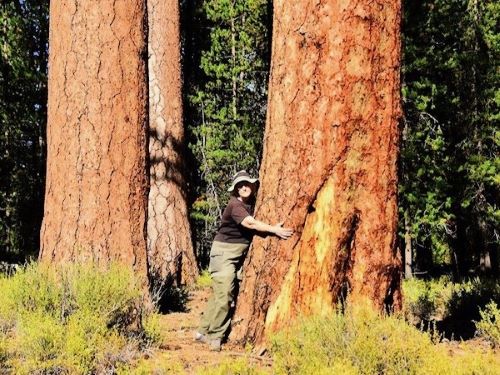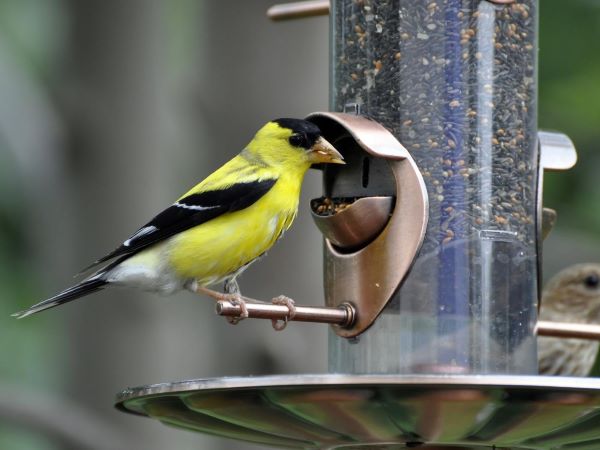Our Habitat Haven volunteers have begun site visits and been enthusiastically received. At the start…
 Springtime brings birdsong and baby birds and feelings of exuberance. There was uplifting news this month out of Midway Island when it was announced that Wisdom, the world’s oldest Laysan Albatross on record and a symbol of hope for many people, has hatched yet another egg—likely her 40th baby! Her new chick is named Kukini, after the Hawaiian word for messenger. She and her mate have been observed this season preening one another, incubating the egg, and feeding the newly hatched chick. Albatross pairs form long-term monogamous bonds and work together to support and care for their offspring.
Springtime brings birdsong and baby birds and feelings of exuberance. There was uplifting news this month out of Midway Island when it was announced that Wisdom, the world’s oldest Laysan Albatross on record and a symbol of hope for many people, has hatched yet another egg—likely her 40th baby! Her new chick is named Kukini, after the Hawaiian word for messenger. She and her mate have been observed this season preening one another, incubating the egg, and feeding the newly hatched chick. Albatross pairs form long-term monogamous bonds and work together to support and care for their offspring.
Wisdom was first banded by biologist Chandler Robbins in 1956; she was a mature adult bird at that time, meaning that she was at least 5 years old. The same man sighted the bird 46 years later and after examining her band, discovered that it was Wisdom still returning to the breeding grounds. Her return this year indicates that she has celebrated her 65th birthday (at least). At the age of 97, Chandler Robbins still returns to the island to see the birds he loves. The hatching grounds are in the Papahānaumokuākea Marine National Monument, which also supports dolphins, sea turtles, and other seabirds. For pictures (albatross chicks are too cute for description) and more information, see www.facebook.com/Papahanaumokuakea.
Some of the major threats that caused a severe decline in albatross populations a century ago have been minimized. The Migratory Bird Treaty Act protected the birds from colossal slaughter, and the establishment of a protected zone provided restored and conserved breeding habitat. Since albatrosses spend the nonbreeding season airborne, Wisdom has likely flown over 3 million miles in her lifetime. That’s the equivalent of six trips to the moon and back—but her flight plan keeps her soaring over the ocean. Unfortunately, albatrosses and other animals that make a living in and over the ocean are still under threat. Bycatch from longline fishing and illegal driftnet operations kill thousands of birds annually. Garbage, especially plastic, kills countless seabirds, mammals, turtles, and other animals every year. Fisheries are being depleted at alarming rates, affecting in turn all members of the food web.
These threats can be addressed. For example, seabird avoidance measures taken by longline fishing operations do reduce losses. People are switching from one-time-use water bottles to reusable ones. The United Nations has task forces working on marine biodiversity conservation that are addressing release of sewage, control of plastic waste, restoration of coastal ecosystems, and incentive-based fisheries management. And last year, a report in the journal Science noted that although marine species were declining in abundance, recovery for most was still within reach (McCauley et al., 2015).
Less clear is how to deal with what may be the biggest threat of all to marine life—namely, climate change. Ocean warming, ocean acidification, and ocean deoxygenation are stressors with profound impacts. Among the repercussions: coral bleaching; difficulty building shells for corals and mollusks such as oysters and mussels; diminishing sensory abilities and behavioral responses (for example, fish cease responding to chemical alarm signals that would promote safety in the presence of predators); reduced plankton abundance affecting the entire food web; reduced availability of fish for seabirds due to changes in upwellings and nutrient distribution in the ocean; and, ironically, a reduction in the ability of the ocean to act as a carbon sink, which helps mitigate the effects of climate change.
This March, the United States and Canada released a joint statement on efforts to address climate change (www.whitehouse.gov/the-press-office/2016/03/10/us-canada-joint
-statement-climate-energy-and-arctic-leadership). Ocean science communities in the United States and Europe called on the United Nations and research funders to incorporate the importance of the ocean into research and planning strategy (www.marineboard.eu/ocean-climate-nexus/sites/marineboard.eu.ocean-climate-nexus/files/public/The%20Ocean-Climate%20Nexus_Consensus%20Statement.pdf). The Global Ocean Forum, an international nonprofit that has organized leaders from 110 countries to promote a healthy-ocean global agenda, confers in May 2016. A high-level United Nations conference addressing the oceans is in the works. In this season of renewal, perhaps we can hope that policy makers will have the wisdom to enact meaningful conservation measures.
Reference: McCauley, D. J., Pinsky, M. L., Palumbi, S. R., Estes, J. A., Joyce, F. H., & Warner, R. R. (2015). Marine defaunation: Animal loss in the global ocean. Science 347:6219.



